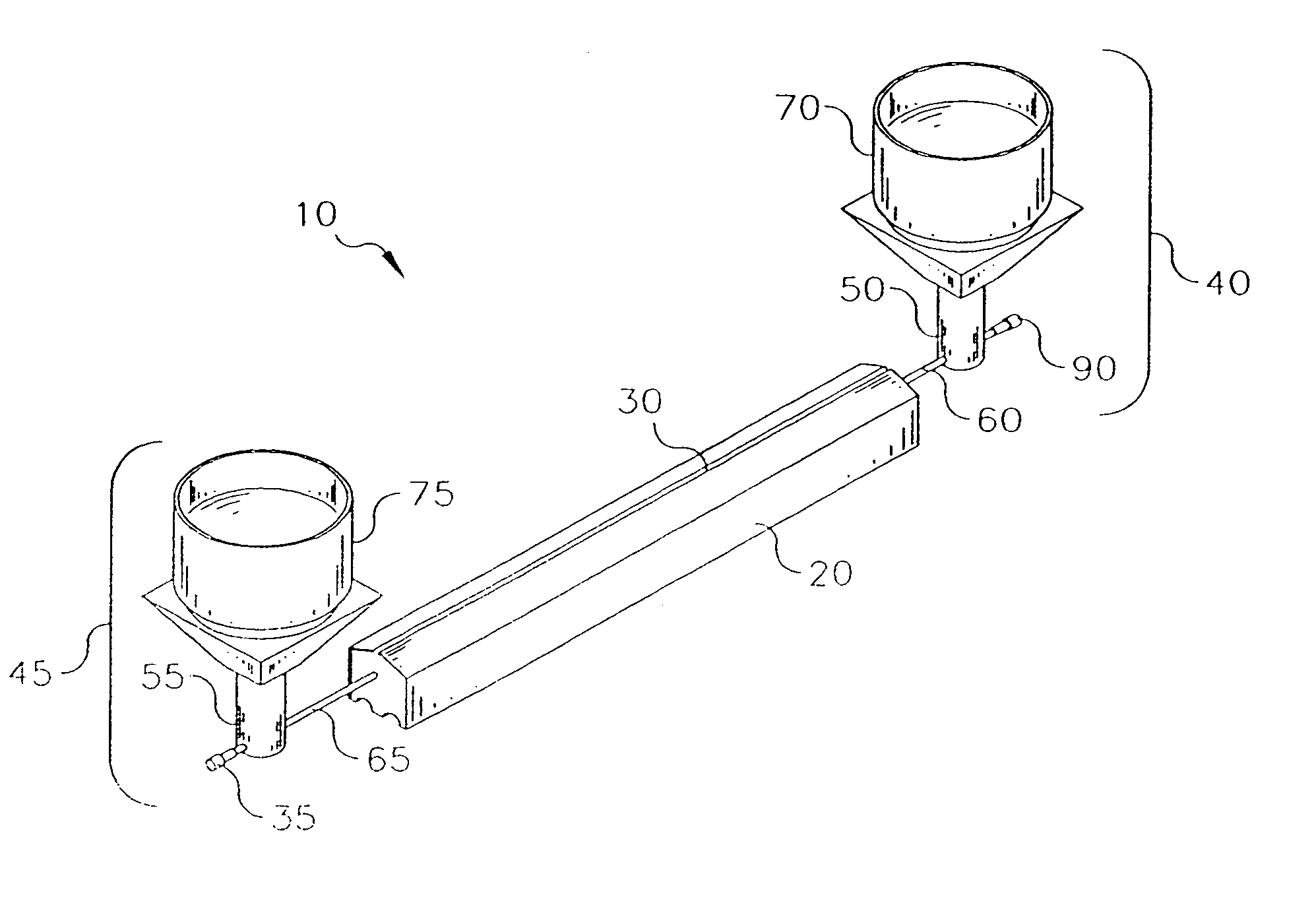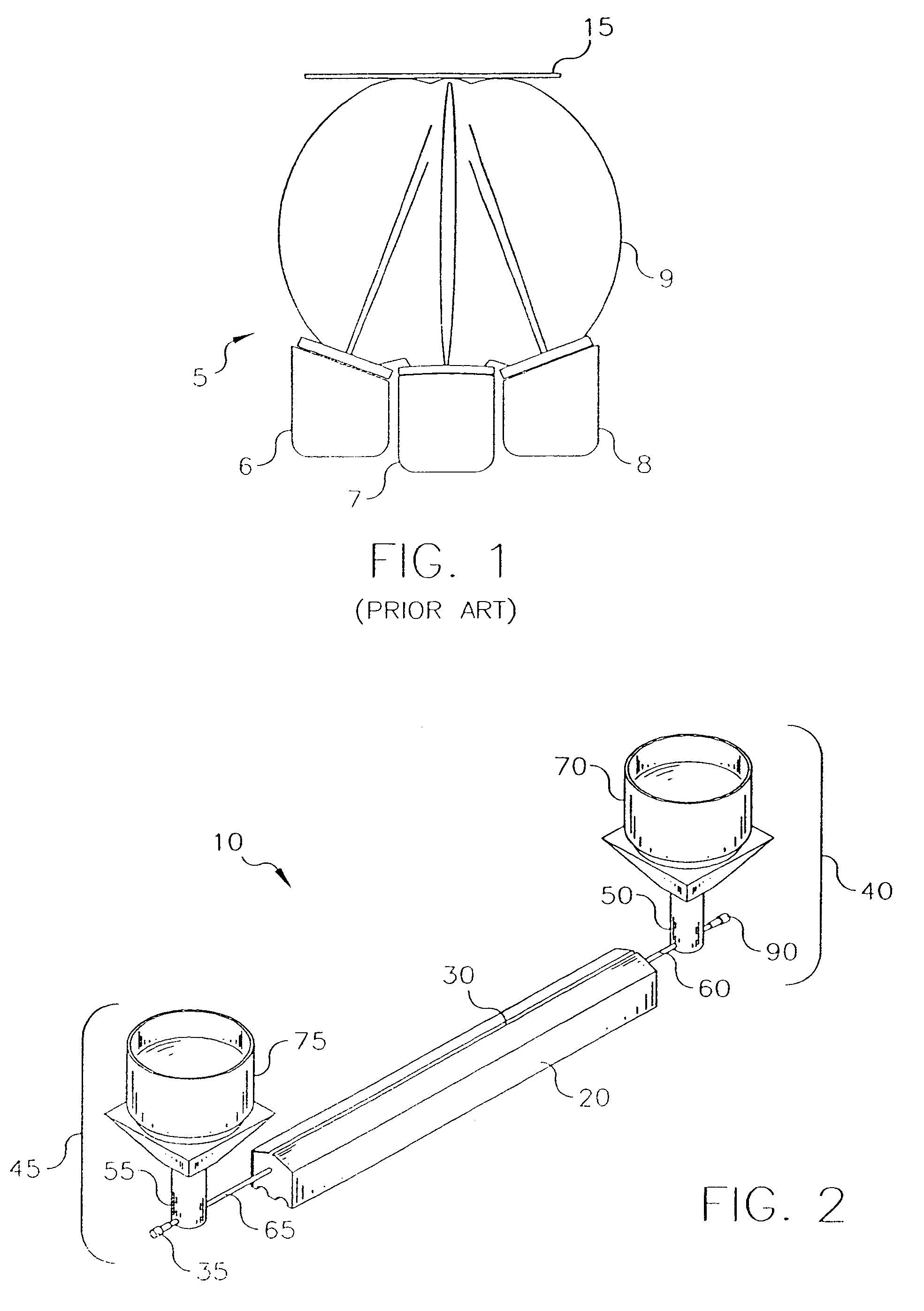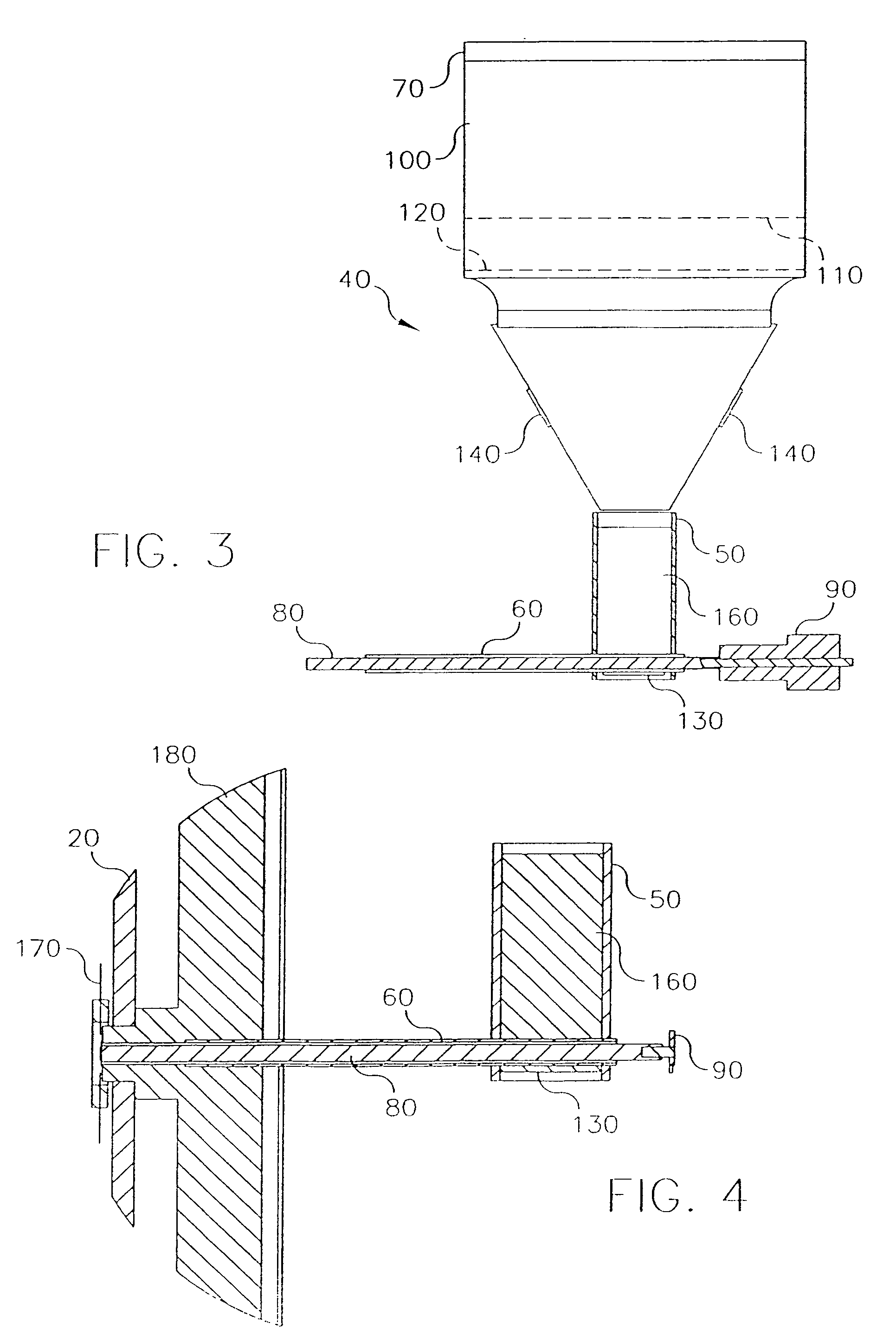Delivering particulate material to a vaporization zone
a technology of vaporization zone and particulate material, which is applied in vacuum evaporation coating, packaging, coatings, etc., can solve the problems of significant degradation, change in the structure of the molecule and associated changes in the material properties, and the use of organic materials in the manufacture of oled devices are often subject to degradation, so as to achieve stable vaporization rate and reduce the risk of degrading , the effect of allowing linear vaporization rate control
- Summary
- Abstract
- Description
- Claims
- Application Information
AI Technical Summary
Benefits of technology
Problems solved by technology
Method used
Image
Examples
Embodiment Construction
[0040] Turning now to FIG. 2, there is shown a three-dimensional view of one embodiment of an apparatus according to the present invention for vaporizing particulate materials and condensing them onto a surface to form a layer. Vaporization apparatus 10 includes manifold 20, attached feeding apparatus 40, and attached feeding apparatus 45. Feeding apparatus 40 includes at least first container 50 and feeding path 60. Feeding apparatus 45 includes at least second container 55 spaced from first container 50 and feeding path 65. First container 50 is provided with a quantity of a first particulate material, such as a powder in one embodiment. Second container 55 is provided with a quantity of second particulate material. Feeding apparatus 40 can also include third container 70, and feeding apparatus 45 can also include fourth container 75. Third container 70 is associated with first container 50 and the first particulate material. Fourth container 75 is associated with second container...
PUM
| Property | Measurement | Unit |
|---|---|---|
| angle | aaaaa | aaaaa |
| angle | aaaaa | aaaaa |
| temperature | aaaaa | aaaaa |
Abstract
Description
Claims
Application Information
 Login to View More
Login to View More - R&D
- Intellectual Property
- Life Sciences
- Materials
- Tech Scout
- Unparalleled Data Quality
- Higher Quality Content
- 60% Fewer Hallucinations
Browse by: Latest US Patents, China's latest patents, Technical Efficacy Thesaurus, Application Domain, Technology Topic, Popular Technical Reports.
© 2025 PatSnap. All rights reserved.Legal|Privacy policy|Modern Slavery Act Transparency Statement|Sitemap|About US| Contact US: help@patsnap.com



